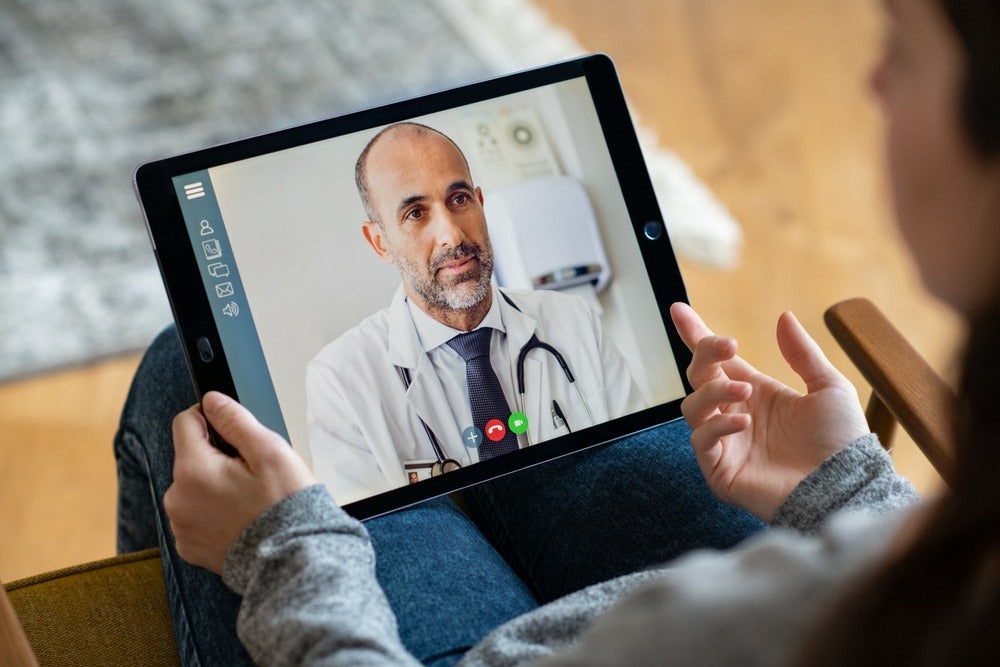
The Covid-19 pandemic has changed the way doctors interact with their patients, many of which have been forced to consult physicians virtually, and S3 Connected Health believes this digital approach to health is here to stay.
The digital health software developer surveyed adults in the UK and the US to investigate how keen they were to use virtual consultations, among other technologies that help doctors keep tabs on their conditions.
Out of the 4,000 adults split 50/50 between both countries, 2,000 of which suffered from a chronic or long-term condition, 30% said they’d like to see a virtual-first approach to consultations, with face-to-face visits only occurring if necessary.
S3 senior clinical consultant Dr Kevin Hanley said: “With millions of patients avoiding or cancelling in-person medical appointments due to fear for their safety in clinical settings, digital healthcare solutions — from video consultations to smart health devices — could offer a vital life-line to consumers in need of medical care.
The share of surveyed respondents that supported virtual-first consultations was higher among US respondents, 36% of which supported the measure in comparison to 23% of UK respondents.
This isn’t surprising given that virtual consultations are less costly to payers of health insurance, whereas the NHS covers the cost of all appointments for UK patients.
Of the chronic patients in the sample, 36% were in favour of a virtual-first approach, suggesting many would prefer that routine visits were more efficient.
Avoiding medical appointments
A key finding in S3’s survey was that a significant minority of patients in both the UK and US have avoided making in-person medical appointments since the onset of Covid-19.
The trend was stronger in the US, where 27% of respondents (compared to 15% in the UK) said they’d actively avoided making appointments – again an unsurprising finding when the financial impact of the pandemic will have increased healthcare cost concerns for many Americans.
The researchers didn’t ask about cost as a factor of avoidance however, and instead lumped respondents from both countries together to get the following reasons for actively avoiding or cancelling an in-person appointment:
- 48% said they don’t feel safe and would only visit in an emergency
- 43% said that they don’t want to receive non-urgent care until after the pandemic
- 38% said they fear catching Covid-19 in clinical settings
- 34% said they simply didn’t feel safe visiting a clinic at all
- 31% said they believe clinical settings are not doing enough to stop the spread of Covid-19
S3 finds demand for digital health
It is not just a desire to avoid clinical settings during the pandemic that is driving demand for digital health.
According to S3, 40% of survey respondents believed taking the digital health route will help alleviate stress on over-stretched healthcare providers and systems, 42% said they saw digital health as more convenient and 35% said it offered better access to healthcare and gave greater peace of mind and daily assurance.
A third (33%) of respondents said they enjoyed being able to proactively manage their own health.
A significant number of those surveyed indicated a belief that digital tools would benefit future healthcare provision, with 45% stating that digital tools would have a positive impact on the future of healthcare and 33% believing they will allow healthcare professionals to focus on more urgent health treatment.
When respondents were asked which technologies and approaches they’d like to see implemented, the following came out in order of priority:
- An app to book appointments – 38%
- An app to track general health and wellness – 30%
- Virtual-first appointments – 30%
- In-clinic care for emergencies only or care that cannot take place remotely – 28%
- Wearable technology or devices to track health at home – 27%
- Digital health that connects me to my doctor – 26%
- Digital health that manages existing conditions, medications, or treatment – 25%
- App to cope with anxiety, stress or mental health – 25%
- Remote-by-default care (appointments always remote unless there’s a specific need to be seen in-person) – 21%
Barriers to adoption
Despite finding significant demand for digital healthcare tools, S3 noted a number of barriers to adoption in its research.
The most pertinent worry among participants was a reduction in the quality of their care, with 32% that stated exactly this and 34% concerned that digital tools will miss important symptoms.
Cost was the second major concern, led by US respondents, of which 28% said they wouldn’t use digital health solutions if they had to pay for them – S3 concluded that digital tools will need to be covered by insurers if there is to be increased and ongoing uptake in this region.
The third big concern of all respondents was privacy, with 25% of patients concerned that their data could fall into the wrong hands, indicating a lack of trust in healthcare providers to handle their personal data.
S3’s Dr Hanley extolled the benefits of more digital technology to supplement healthcare, while suggesting a way to allay many of the fears.
“Not only can they help monitor our general health and wellbeing, but enable care provision to continue remotely, and negate the risk of infection by minimising the need for face-to-face meetings between doctors and patients,” he said.
“Wider spread adoption would likely help to combat consumer fear, and improve patient outcomes at the same time.”






